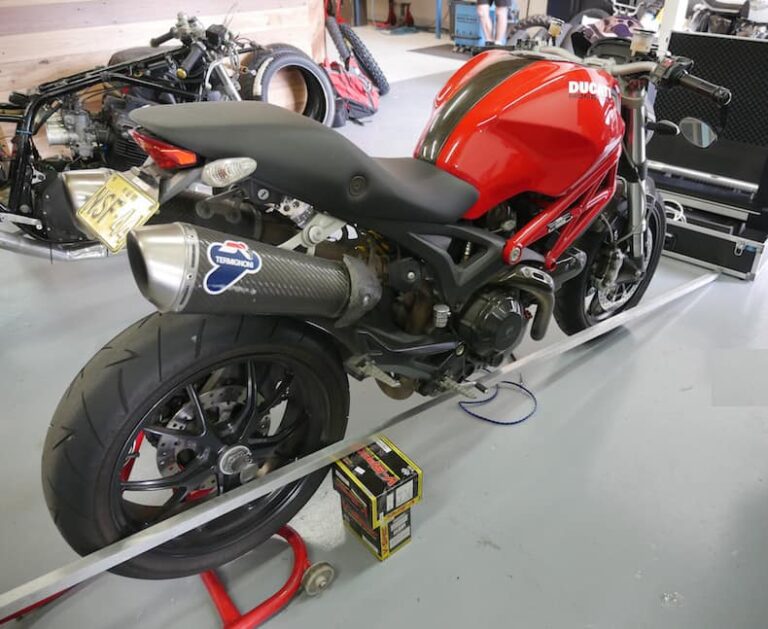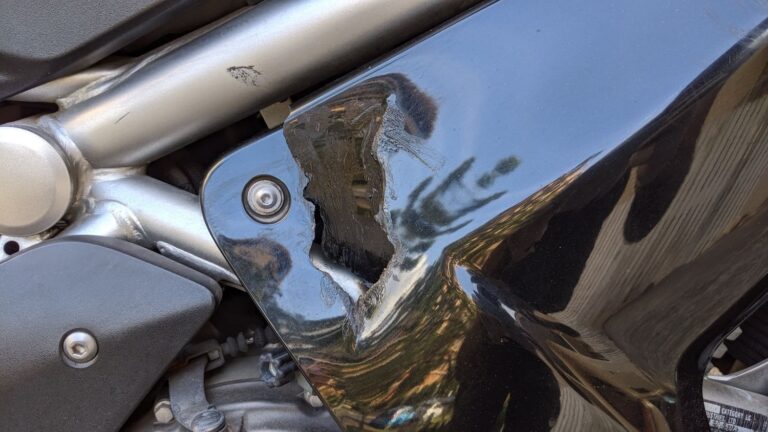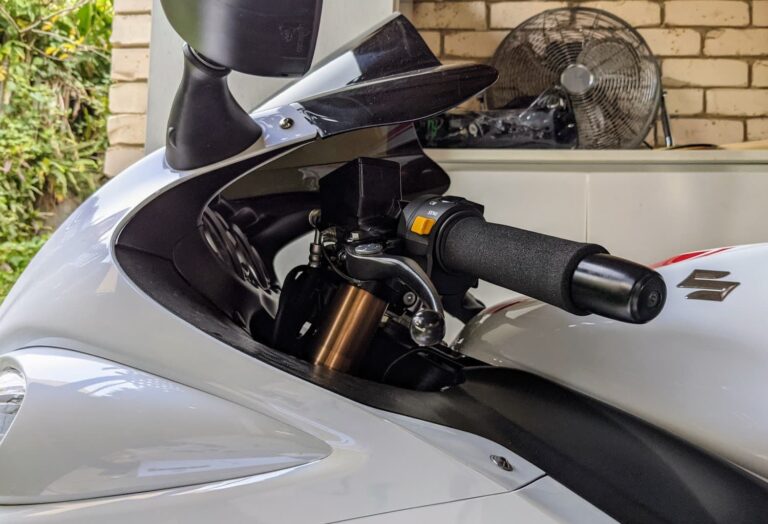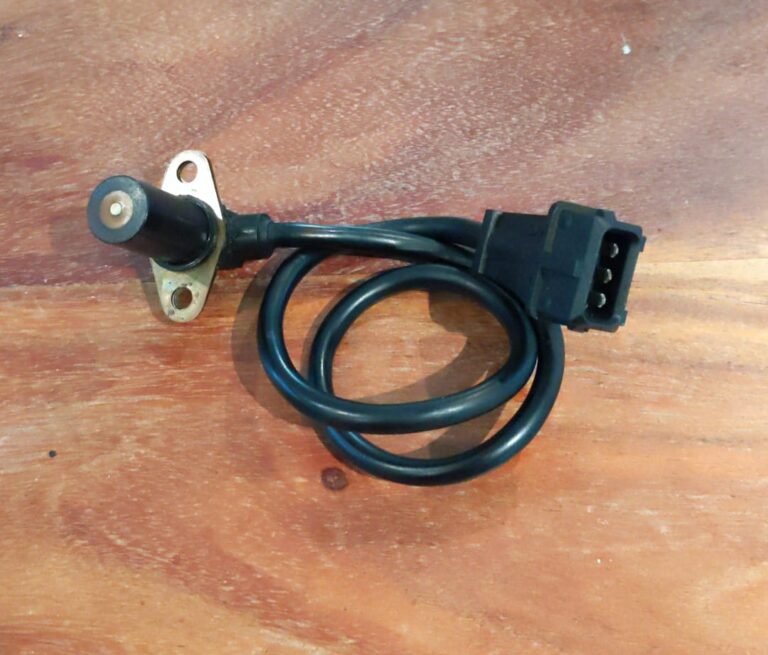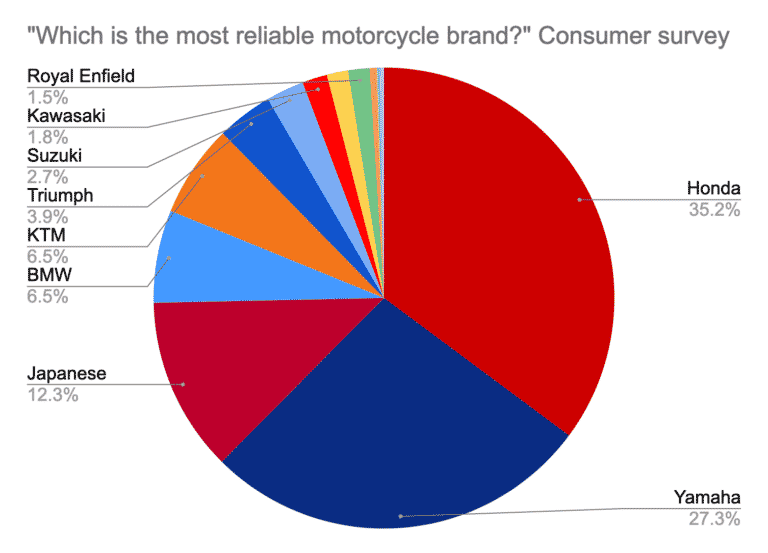If you’ve ever suffered from windblast on a touring or sport touring bike and wanted to reduce it, you’re probably aware of the difficulty of buying a windscreen of the correct height and design.
But it’s so hard to buy the right windscreen — the right height and the right shape. Motorcycle forums are full of contrasting voices and are very difficult to use because everyone has different torso heights, riding styles, sensitivity to noise, helmets, and more. What works for one is almost guaranteed to not exactly meet another person’s needs. (And this is aside from everyone on forums who says “Have you tried doing a search?”)
That’s why I came up with the idea to prototype a motorcycle windscreen with cardboard to test the right height and shape — for your bike and your needs.
This isn’t the most genius idea in the world. But like my cheapo stand for a single-sided swingarm, it has proved useful to some people, so I’m sharing it!
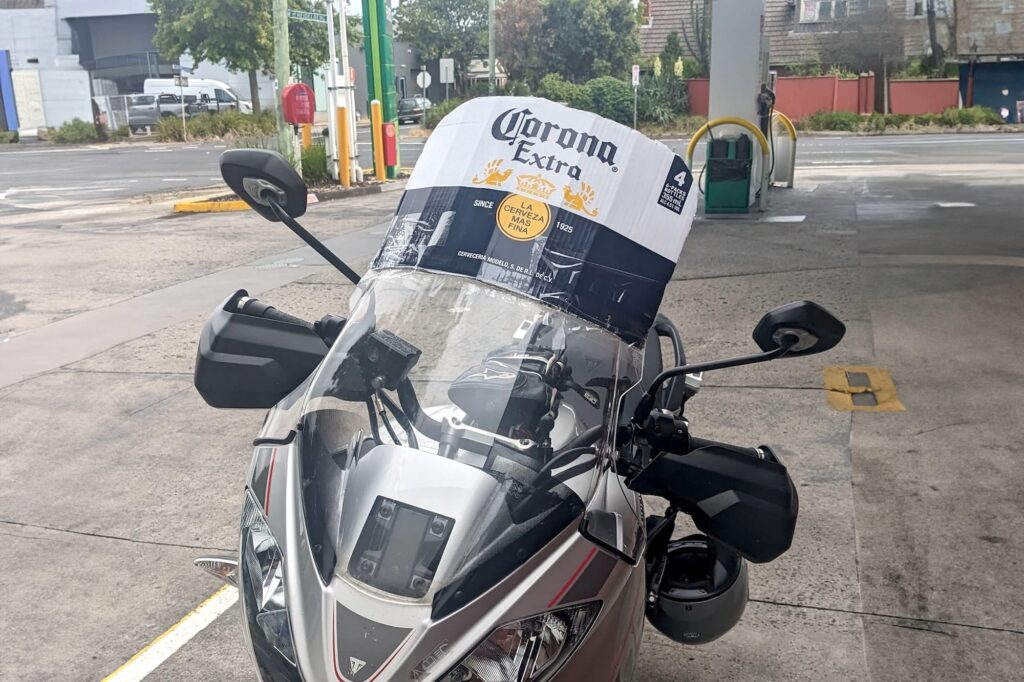
Are you obsessed with motorcycles?
Well, I am. That’s why I created this site — as an outlet. I love learning and sharing what others might find useful. If you like what you read here, and you’re a fraction as obsessed as I am, you might like to know when I’ve published more. (Check the latest for an idea of what you’ll see.)
How to Prototype a Windscreen with Cardboard
Before anything — do all your testing on a very quiet road. A windshield with cardboard extension won’t block your vision of the road (unless you’re doing it wrong), but it does reduce visibility.
The first thing people think when they see this photo is that I can’t see through it. It looks like that at a standstill. In reality, though, my helmet is fully above the shield. My visibility is definitely reduced, though — for example, if a car were in front of me at the lights, I wouldn’t be able to see its plate. This reduction of visibility is not an issue if there are no other cars on the road, but I wouldn’t recommend this setup in traffic.
I would recommend doing this on a totally private road in the middle of nowhere.
When you cut the cardboard, cut it so that its vertical grain goes up. This means that it has more rigidity and will be able to withstand windblast even at freeway speeds.
There are three elements that are worth testing.
Firstly, you’re going to test height. So much should be obvious. Cut out a windshield that’s wide enough and also tall enough — plus a few inches (or 10 cm, say), to give yourself some area to cut down.
Secondly, you’re going to test shape. Windshields don’t have to just go straight back — they can also curl up, to redirect the wind.
It’s hard to shape cardboard (without ruining its structure), so I suggest you build a little spoiler out of other cardboard pieces that you can stick in place. You can either put this on before your ride, or keep it with you and put it on to test after riding without the spoiler.
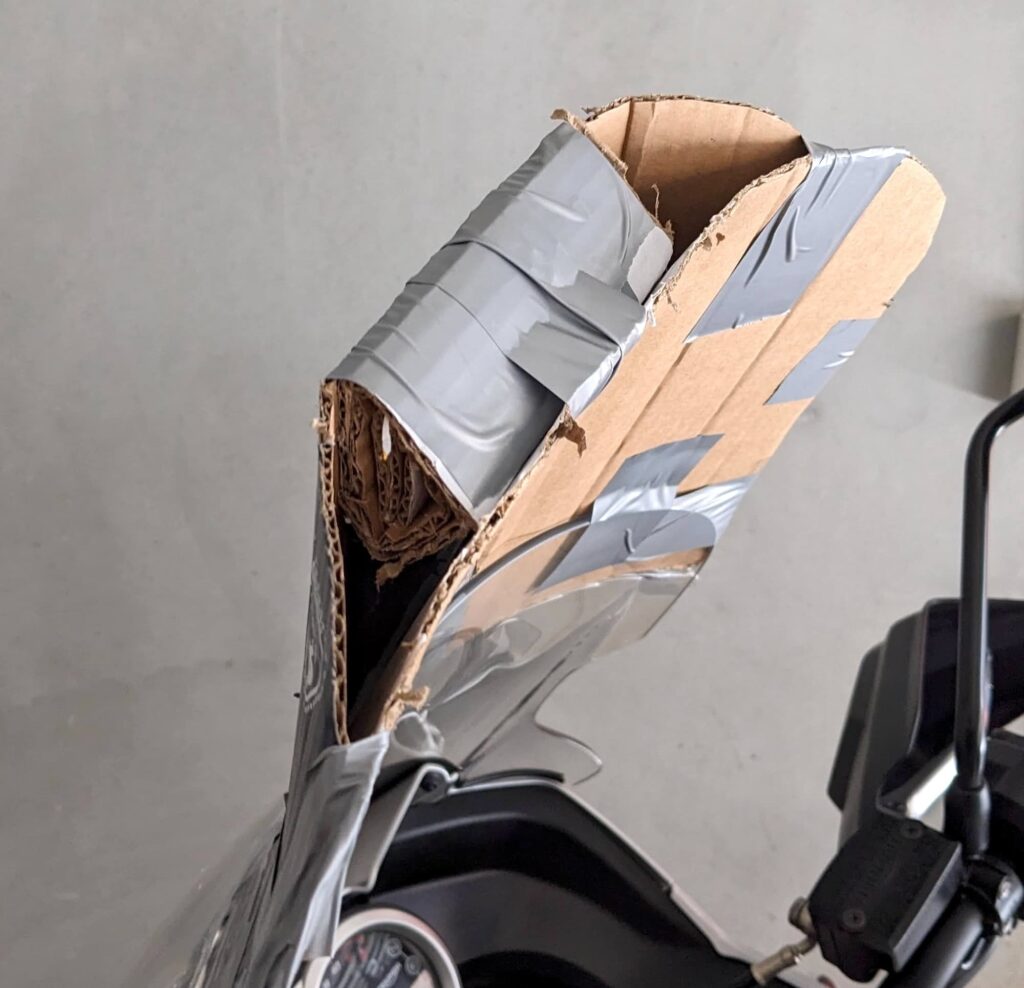
Finally, you’re going to test buffeting.
Many modern windscreen designs have some kind of way of reducing the air pressure differential between in front of and behind the windscreen. They do this by keeping a gap between the chassis and the shield, or with a hole in the screen.
You can attach streamers to your windshield to detect buffeting, if you want, but I just took an educated guess and cut a hole in the windscreen in a suitable location.
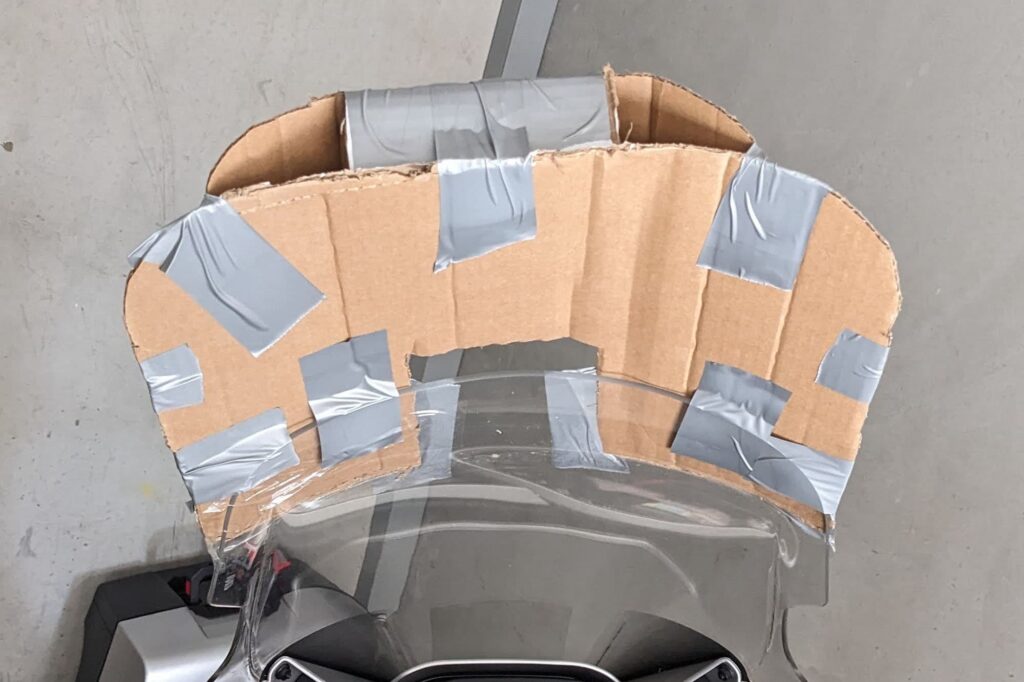
When going out with your prototype, I suggest you go out with cardboard, scissors/a knife, and table so you can make modifications on the fly.
While out on the road, do the obvious and move your head about. Test for airflow and visibility, and try to pick where your compromise would be.
Prototyping Results
After several runs on the freeway at 100 km/h, I was pleased to note a few things.
Firstly, visibility was down, but not so down that I felt it’d be dangerous. Nonetheless, I wouldn’t have wanted a cop to see me. Worse, I didn’t like the “Corona” logo on the front, so I covered that up! (Not before posting an image on /r/redneckengineering, though…)
Secondly, my prototype windscreen didn’t flap around, even at highway speeds! I really thought it’d flex a bit and maybe fold over, possibly dangerously. It didn’t. (The road was very clear and straight, so I was giving myself room for error.)
Thirdly, I was interested to see how the height and curvature differences affected airflow.
My first prototype was tall to my eye. But the second and third prototypes, while not much taller, made a huge difference.
My final prototype gave me exactly the amount of windflow I wanted. It was like having the windows open, cruising around town. I could even not wear earplugs at highway speeds. Perfect!
Next Steps
Obviously, you can’t run around with a cardboard windshield. It’s low visibility and will inevitably fail on you (especially if it rains).
Take the height and shape and either make your own extension out of strong perspex (it’s quite easy to cut and also easy to bend with heat) or get an aftermarket windshield maker like Madstad to make one up for you at the required total height.
Good luck, and if this is useful, let me know.


